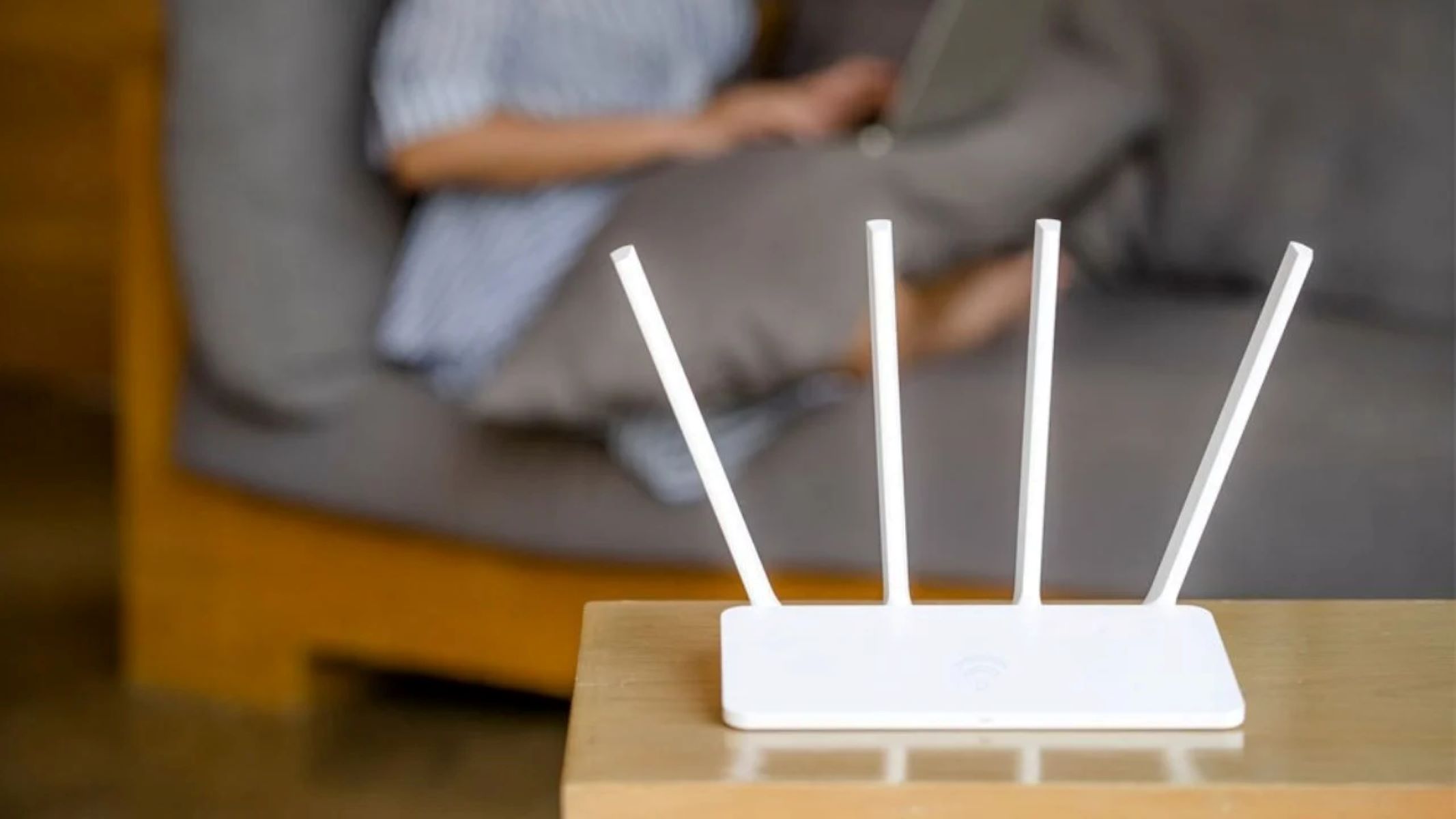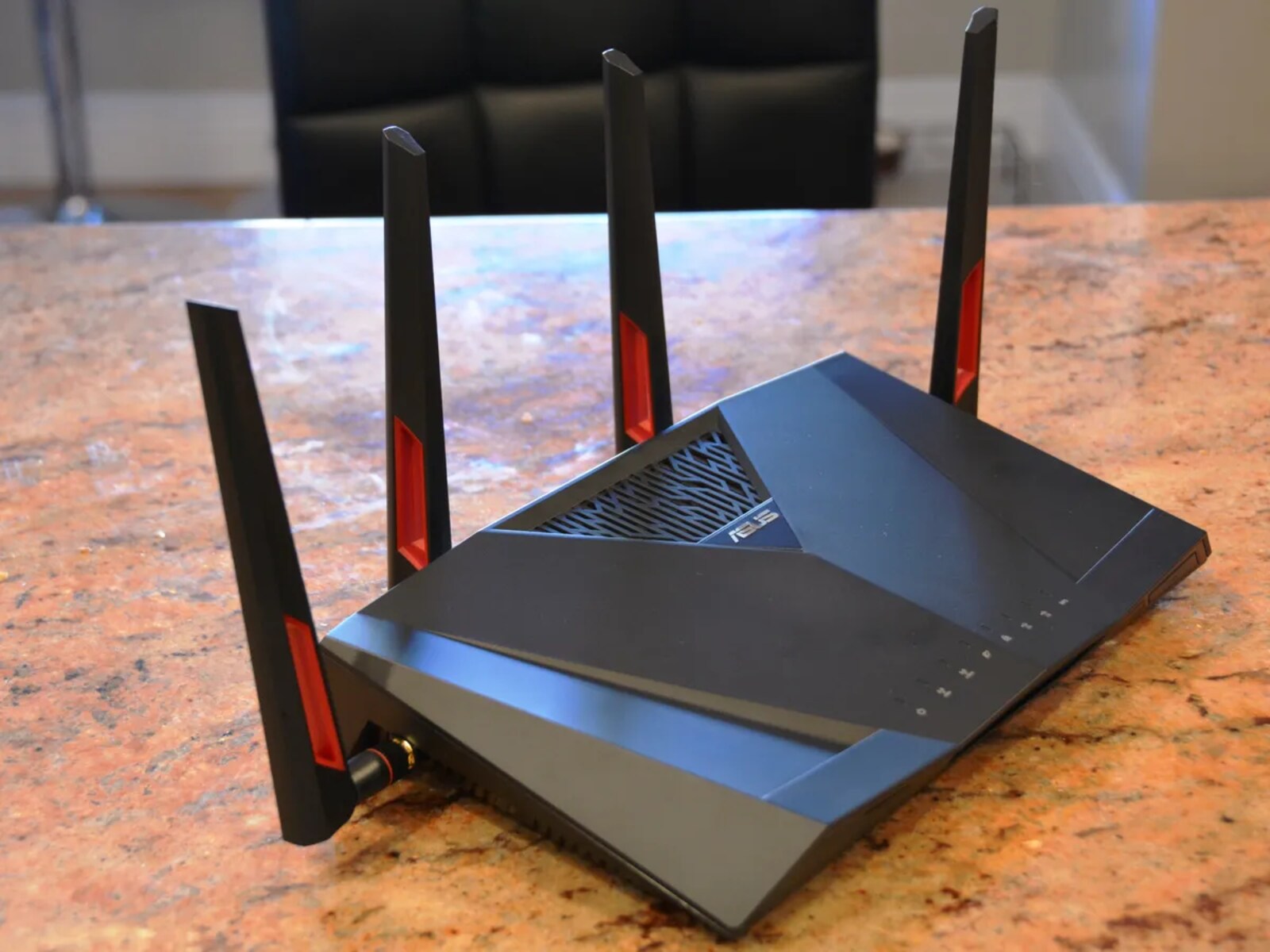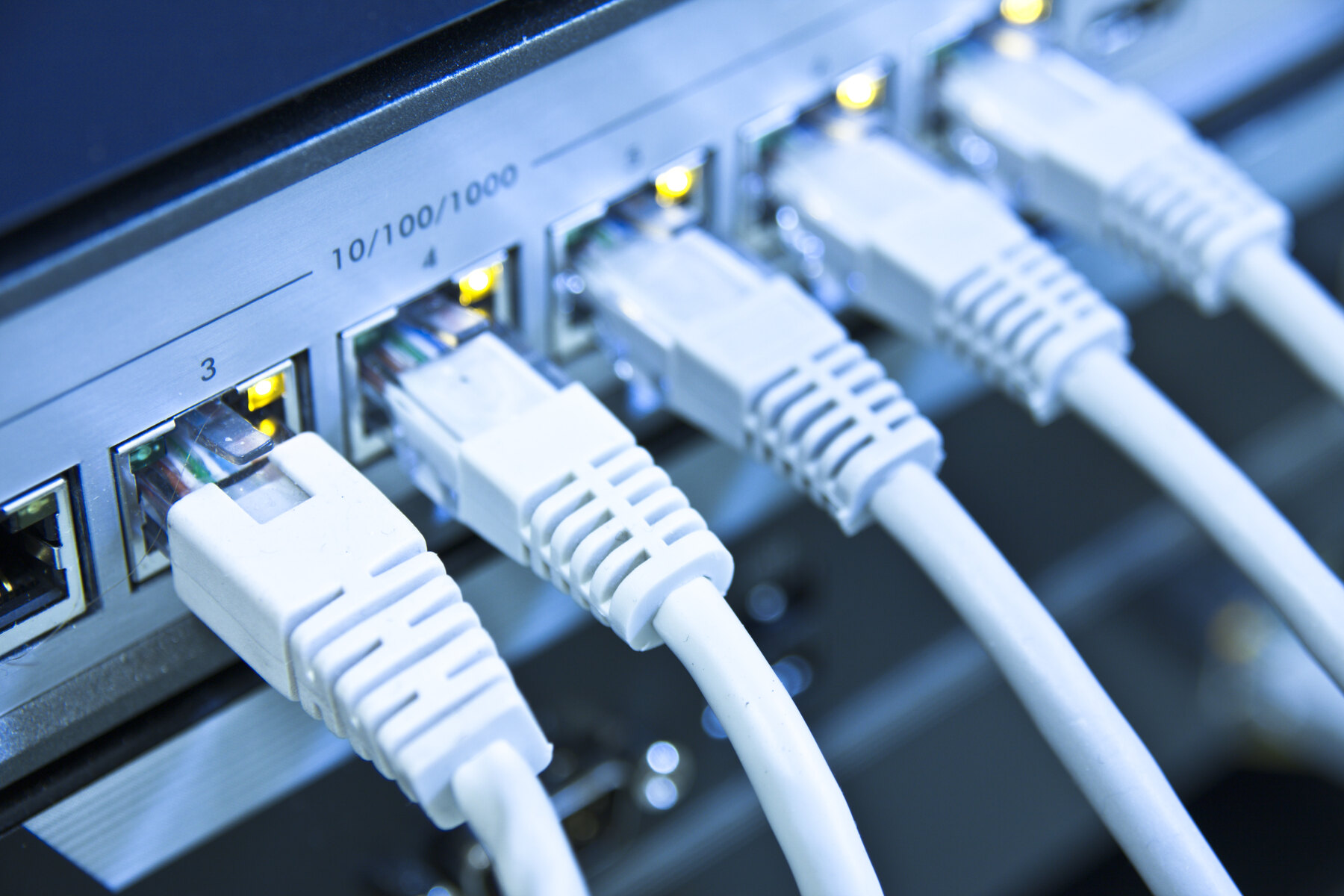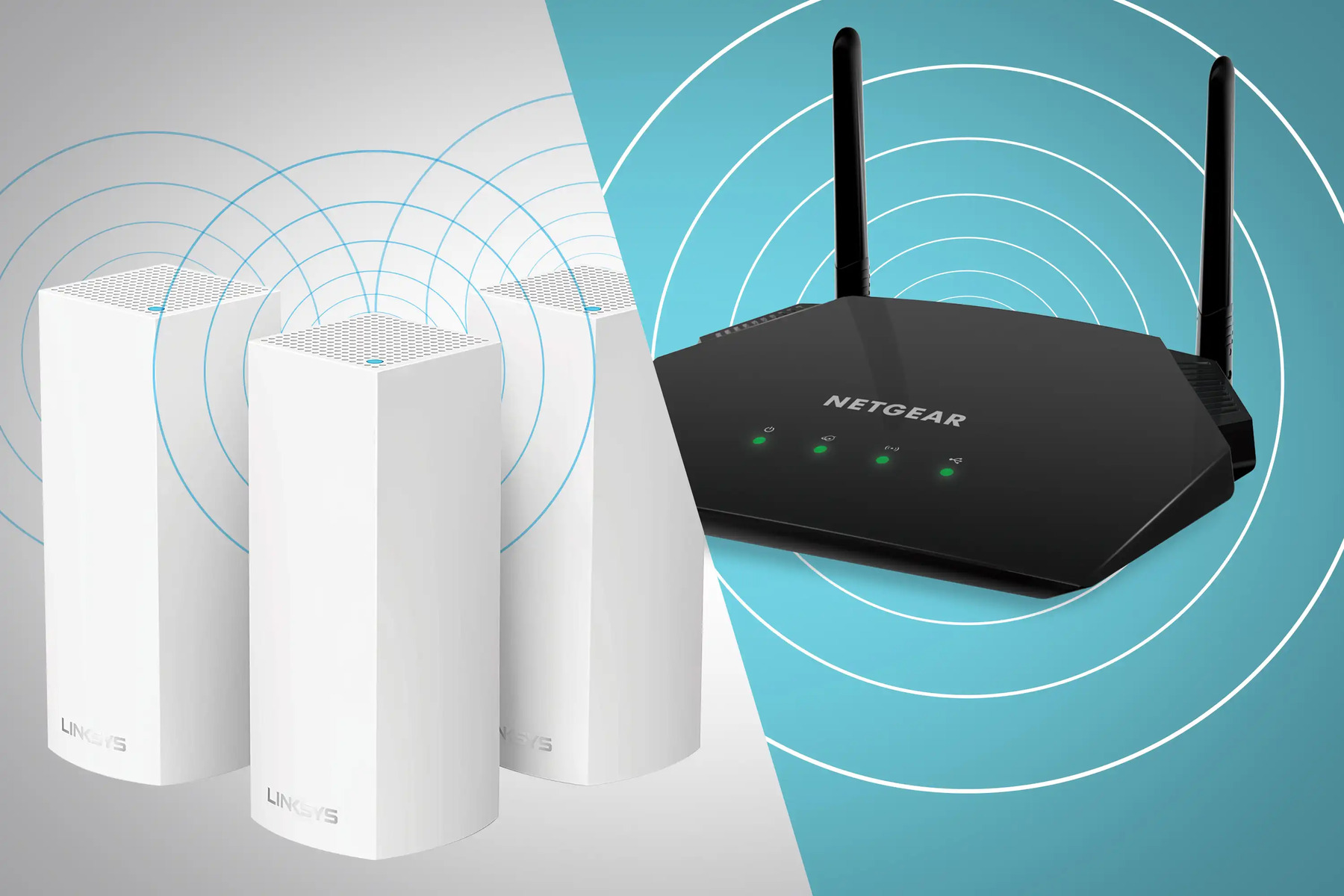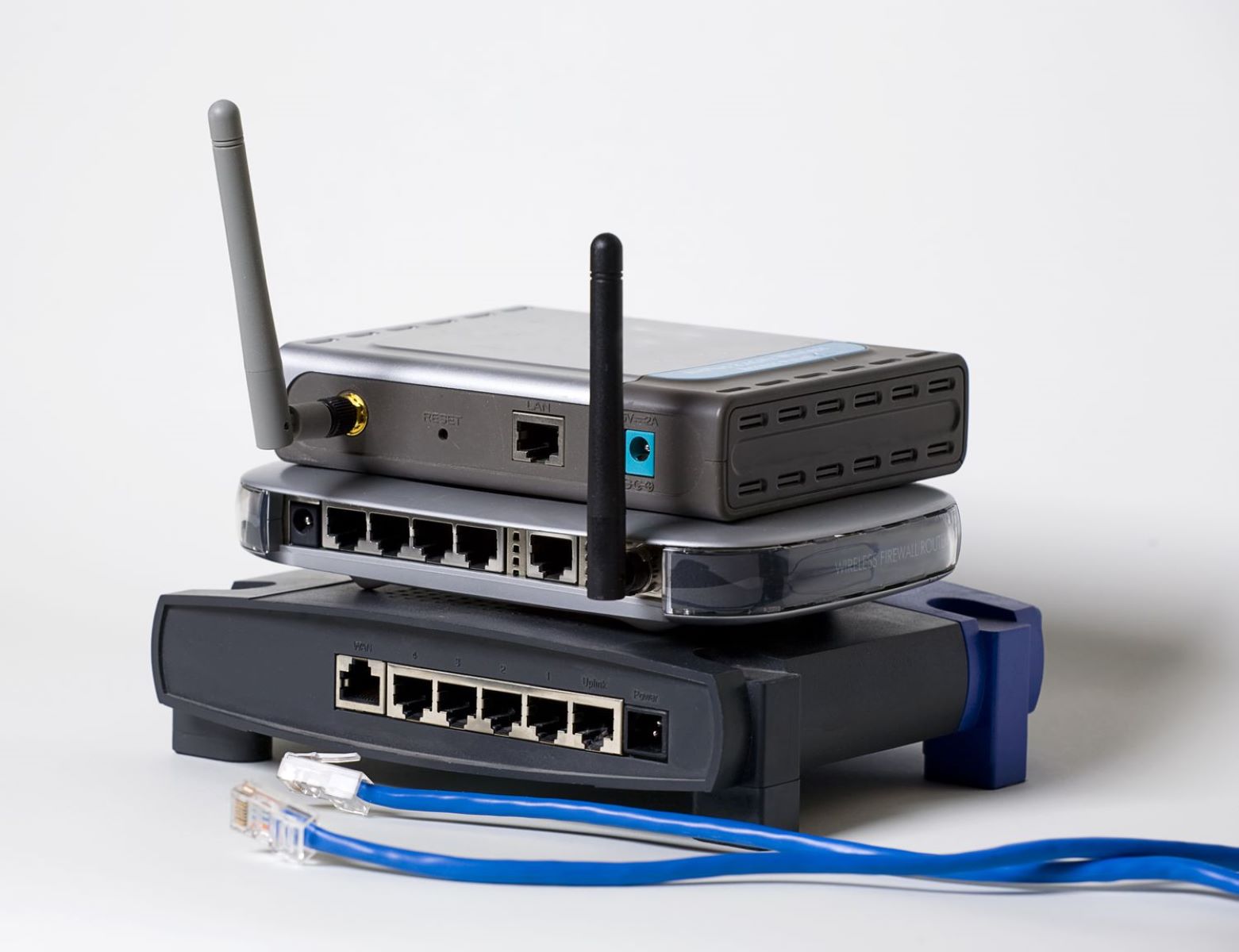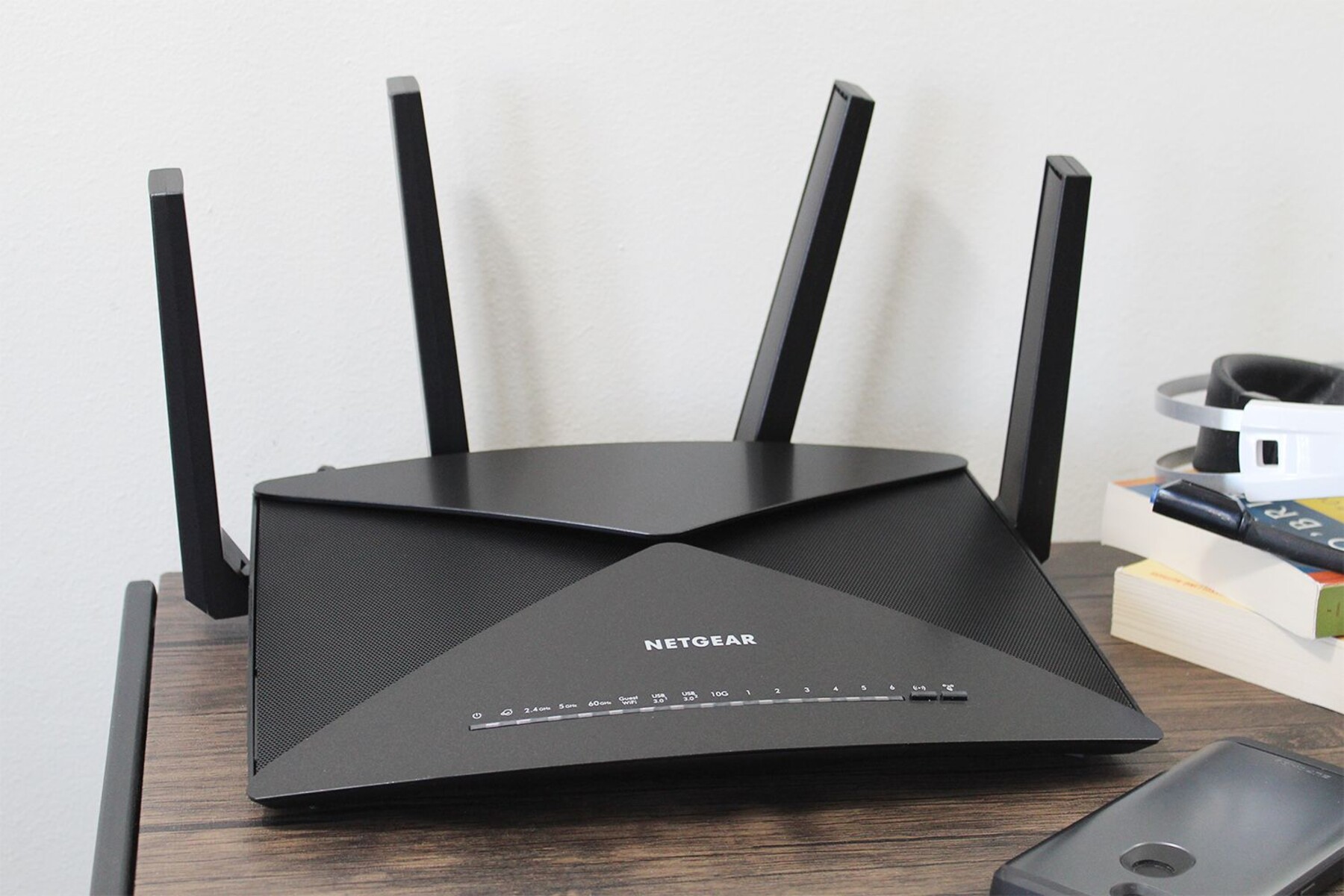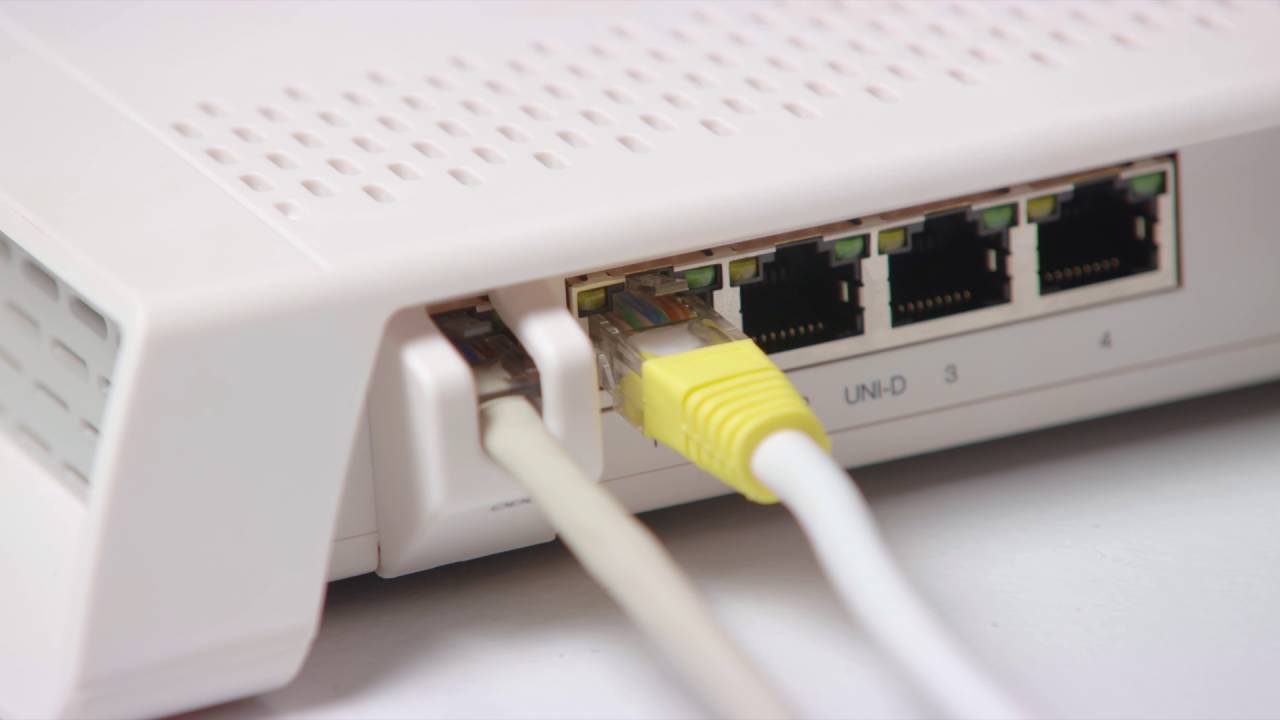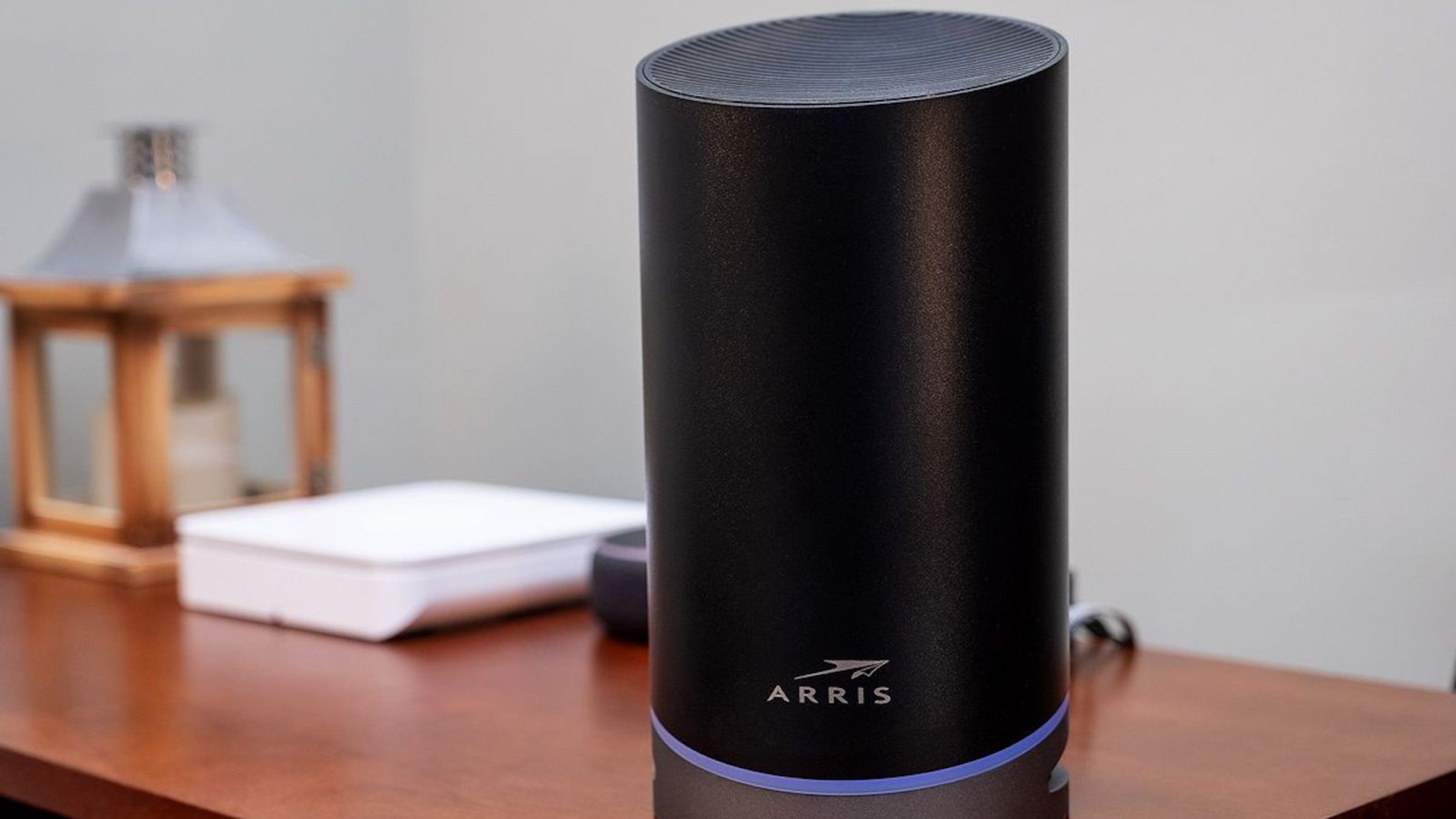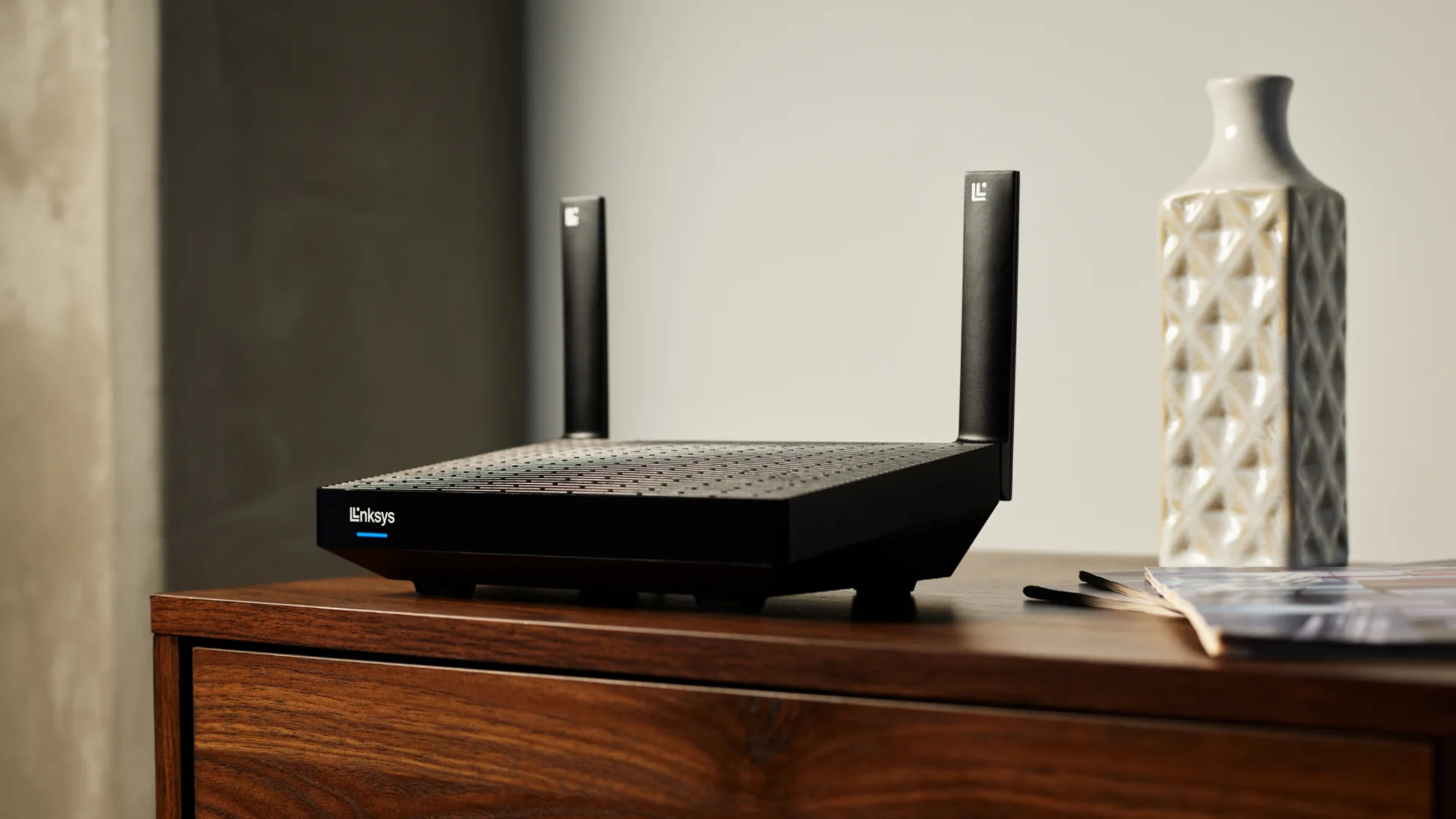Introduction
Welcome to the world of wireless connectivity! Setting up a wireless router can seem like a daunting task, but with a little guidance, you’ll have your home network up and running in no time. Whether you’re connecting multiple devices or looking to extend your internet access throughout your entire house, a wireless router is a crucial piece of equipment that allows you to do just that.
In this step-by-step guide, we will walk you through the process of setting up your wireless router. We’ll cover everything from gathering the necessary equipment to securing your network, ensuring that you can enjoy fast and reliable internet access on all your devices.
Before we dive into the technical details, it’s important to understand the basics. A wireless router serves as the central hub that connects your devices to the internet wirelessly, using Wi-Fi technology. It acts as a bridge between your modem (which connects to your internet service provider) and your devices, allowing them to communicate and access the internet.
By setting up a wireless router, you can enjoy the convenience of mobility, allowing you to connect your smartphones, tablets, laptops, and other devices to the internet without the need for cumbersome cables. This freedom allows you to access the web from anywhere within the range of your router.
Whether you’re a tech-savvy individual or a beginner in the world of networking, this guide will provide you with clear and concise instructions to ensure a hassle-free setup process. So, let’s dive in and get your wireless router up and running!
Step 1: Gather the necessary equipment
Before you can begin setting up your wireless router, it’s important to gather all the necessary equipment. Here’s what you’ll need:
- A wireless router: Make sure to choose a router that fits your needs and supports the latest Wi-Fi standards for better performance.
- A modem: Your modem connects to your internet service provider and provides access to the internet. Some routers have a built-in modem, so you may not need a separate one.
- An Ethernet cable: This cable is used to connect your router to the modem. It’s important to have a high-quality cable for a stable and reliable connection.
- A power adapter: Most routers come with a power adapter that needs to be plugged into a power outlet.
- A computer or smartphone: You’ll need a device to access your router’s web interface for configuration.
- A username and password: Some routers come with default login credentials, so make sure to change them for better security.
Once you have gathered all the necessary equipment, you’re ready to move on to the next step. Having everything prepared beforehand will make the setup process smoother and more efficient.
Remember, it’s essential to choose a wireless router that fits your specific needs. Consider factors like the size of your home, the number of devices you’ll be connecting, and the internet speed you require. Research different models and read reviews to make an informed decision.
Now that you have all the equipment ready, let’s move on to finding the ideal location for your wireless router.
Step 2: Choose the right location for your router
Choosing the right location for your wireless router is crucial for optimal performance and coverage. Here are some factors to consider when finding the perfect spot:
1. Centralized location: Place your router in a central area of your home to maximize coverage and ensure a strong signal throughout. Avoid corners or areas with thick walls, as they can impede the wireless signal.
2. Height and elevation: Position your router at a higher elevation, such as on a shelf or mounted on a wall. This helps to minimize obstructions and improve signal propagation.
3. Avoid interference: Keep your router away from other electronic devices that may cause interference, such as cordless phones, baby monitors, microwave ovens, and Bluetooth devices. These can disrupt the Wi-Fi signal and result in slower speeds or dropped connections.
4. Distance from obstacles: Try to place your router away from physical obstructions like large furniture, metal objects, or thick walls to maximize signal strength. These objects can absorb or block the Wi-Fi signal, leading to weaker coverage.
5. Keep it cool: Ensure that your router is placed in a well-ventilated area with good airflow. Routers generate heat, and excessive heat can affect their performance and lifespan.
Once you’ve identified the ideal location, connect your router to the modem using an Ethernet cable. This should be a simple plug-and-play process, as most routers and modems have corresponding ports to establish a physical connection.
In the next step, we’ll power up your router and modem to get your wireless network up and running.
Step 3: Connect the router to the modem
Now that you have chosen the right location for your wireless router, it’s time to connect it to your modem. Follow these steps to establish a connection:
1. Turn off your modem: Before connecting the router, make sure to turn off your modem by unplugging it from the power source. This allows for a clean and stable connection.
2. Locate the WAN port: On the back of your router, locate the WAN or Internet port. It is usually labeled and has a different color than the other ports. This port is used to connect your router to the modem.
3. Connect the router to the modem: Take one end of the Ethernet cable and plug it into the WAN port of your router. Then, take the other end of the cable and insert it into the Ethernet port on your modem.
4. Power on your modem: Once the router is connected to the modem, plug in your modem and ensure that it is powered on. Wait for a few minutes for the modem to establish an internet connection.
5. Power on your router: After the modem is fully powered on and connected to the internet, it’s time to power on your router. Plug the power adapter into the router and connect it to a power outlet. The router will start booting up and establishing a connection with the modem.
6. Wait for the connection: Give the router a few minutes to establish a connection with the modem and establish an internet connection. You may notice lights on the router indicating successful connectivity.
Once the connection is established, you’re ready to move on to the next step. In step 4, we will power up the router and modem to ensure they are working correctly together.
Step 4: Power up the router and modem
Now that you’ve connected your wireless router to the modem, it’s time to power up both devices. Follow these steps to ensure a smooth and successful startup:
1. Verify the power connections: Make sure that both the router and modem are securely plugged into a power outlet. Check the power cords and adapters to ensure they are properly connected.
2. Turn on the modem: Begin by turning on your modem. Locate the power button or switch on the device and press it to power it on. Wait for the modem to go through its startup process, which can take a few minutes.
3. Power on the router: Once the modem is powered on and fully operational, it’s time to power on your router. Locate the power button on the router and press it to turn it on. Allow the router a few minutes to boot up and establish a connection with the modem.
4. Check the router lights: As the router powers up, observe the lights on the front panel. Different routers have different indicator lights, but typically you should see lights indicating power, connectivity, and Wi-Fi activity. Refer to your router’s manual to interpret the meaning of each light.
5. Ensure proper connectivity: Once both the router and modem are powered on, check for proper connectivity. Verify that the router’s WAN or Internet light shows a stable connection, indicating that it has successfully established a connection with the modem.
If everything is working properly, congratulations! You have successfully powered up your router and modem. In the next step, we will learn how to access your router’s web interface to configure its settings.
Step 5: Access your router’s web interface
Accessing your router’s web interface is the next crucial step in setting up your wireless network. This interface allows you to configure various settings and customize your network. Follow these steps to access it:
1. Connect your device to the router: Make sure your computer or smartphone is connected to the router either via an Ethernet cable or through a Wi-Fi connection. If you’re using a wired connection, connect one end of the Ethernet cable to a LAN port on the back of the router and the other end to your device’s Ethernet port.
2. Find the router’s IP address: Open a web browser on your device and enter the router’s IP address into the address bar. The IP address is usually printed on a label on the router or can be found in the router’s manual. Common router IP addresses include 192.168.0.1, 192.168.1.1, or 192.168.2.1.
3. Enter the router’s login credentials: Once you’ve entered the router’s IP address, you will be prompted to enter a username and password. Many routers come with default login credentials, so check the router’s manual or the manufacturer’s website if you’re unsure. It’s always advisable to change the default login credentials for improved security.
4. Access the web interface: After entering the correct login credentials, you will be granted access to your router’s web interface. This is where you can make modifications to various settings, such as your Wi-Fi network name (SSID), password, security protocols, and more.
It’s important to familiarize yourself with the different sections and settings within the web interface. Take your time to explore the options and make any necessary adjustments to suit your preferences and requirements.
Remember to save any changes you make before exiting the web interface. This ensures that your changes are applied and will be in effect when you connect to your wireless network.
In the next step, we’ll look at how to configure your router’s settings to set up a Wi-Fi network.
Step 6: Configure the router’s settings
Now that you have access to your router’s web interface, it’s time to configure its settings to set up your Wi-Fi network. Follow these steps to ensure your router is optimized for your specific needs:
1. Change the Wi-Fi network name (SSID): One of the first settings to adjust is the network name, also known as the SSID (Service Set Identifier). Choose a unique and easily recognizable name for your Wi-Fi network. Avoid using personal information or sensitive data in the network name for security reasons.
2. Set a strong Wi-Fi password: Protect your network from unauthorized access by setting a strong password. Use a combination of uppercase and lowercase letters, numbers, and special characters. Aim for a password that is at least 8-12 characters long. Remember to save the password in a secure location for future reference.
3. Select a wireless encryption method: To secure your wireless network, choose an encryption method like WPA2-PSK (Wi-Fi Protected Access 2 – Pre-Shared Key). This offers strong security and encryption for your data. Avoid using outdated encryption methods like WEP (Wired Equivalent Privacy), as they are less secure.
4. Adjust channel settings: By default, routers are set to automatically select the Wi-Fi channels. However, in crowded Wi-Fi environments, manually selecting a specific channel can help reduce interference and improve signal quality. Use the web interface to experiment and find the optimal channel for your network.
5. Enable guest network (optional): Many routers offer the option to set up a separate guest network. This allows visitors to connect to the internet without gaining access to your main network. If you frequently have guests or want to separate your personal devices from guest devices, this can be a beneficial feature to enable.
6. Save and apply the changes: After making the necessary adjustments to your router’s settings, save the changes and apply them. This ensures that your configured settings are saved and will be in effect when you connect to your Wi-Fi network.
Remember to periodically review and update your router’s settings to ensure the best performance and security for your network. In the next step, we’ll go over how to set up a Wi-Fi network with the new settings.
Step 7: Set up a Wi-Fi network
With your router’s settings configured, it’s time to set up your Wi-Fi network. Follow these steps to create and customize your network:
1. Open the router’s web interface: Ensure that your device is connected to the router either via Wi-Fi or Ethernet cable. Open a web browser and enter the router’s IP address in the address bar. Enter your login credentials when prompted to access the web interface.
2. Locate the Wi-Fi settings: Within the web interface, navigate to the Wi-Fi settings section. This is where you can customize various aspects of your wireless network, including the network name (SSID) and password.
3. Set the network name (SSID): Choose a unique and easily recognizable name for your Wi-Fi network. This is the name that will appear when devices search for available networks. Avoid using personal information or sensitive data in the network name for security reasons.
4. Set the Wi-Fi password: Set a strong and secure password for your network. Use a combination of uppercase and lowercase letters, numbers, and special characters. Aim for a password that is at least 8-12 characters long.
5. Enable network encryption: To safeguard your Wi-Fi network, enable network encryption. Choose the encryption method you previously configured, such as WPA2-PSK, and enter the corresponding passphrase or password.
6. Customize advanced settings (optional): Depending on your router, you may have additional options to customize advanced network settings. These can include bandwidth allocation, parental controls, Quality of Service (QoS) settings, and more. Explore these options if you require advanced configurations.
7. Save and apply the settings: After making changes to your Wi-Fi network settings, save and apply the settings within the router’s web interface. This will ensure that your configured Wi-Fi network is active and ready for use.
Once the changes are saved, your Wi-Fi network is now set up and ready to connect devices. In the next step, we’ll discuss how to secure your wireless network to protect it from unauthorized access.
Step 8: Secure your wireless network
Securing your wireless network is essential to protect your personal information and prevent unauthorized access. Follow these steps to enhance the security of your Wi-Fi network:
1. Change the default login credentials: To prevent unauthorized access to your router’s settings, change the default login username and password. Create a strong and unique combination that is not easily guessable.
2. Enable network encryption: Ensure that your Wi-Fi network is using the highest level of encryption available, such as WPA2-PSK. This encryption protocol provides a strong barrier against unauthorized users attempting to gain access to your network.
3. Change the network password regularly: Regularly change your Wi-Fi network password to maintain security. Set a reminder to update your password every few months, or immediately if you suspect it has been compromised.
4. Disable guest network if not needed: If you don’t have a need for a guest network, disable it to reduce the risk of unauthorized users connecting to your network. This ensures that only authorized devices can access your Wi-Fi network.
5. Enable MAC address filtering: MAC address filtering allows you to specify which devices are allowed to connect to your network. By adding the MAC addresses of your devices to a whitelist, you can restrict access to your network to only authorized devices.
6. Disable remote management: Remote management allows access to your router’s settings from outside your network. Disable this feature to prevent unauthorized access to your router’s configuration.
7. Enable firewall and network protection features: Routers often have built-in firewall and network protection features. Enable these to add an extra layer of security to your network, protecting against malicious attacks.
8. Regularly update router firmware: Keep your router’s firmware up to date by installing the latest updates provided by the manufacturer. Firmware updates often include security enhancements and bug fixes that can help protect your network.
9. Be cautious with guest access: If you enable guest access, ensure that it is isolated from your main network. Set a separate password for the guest network, and limit its access to the internet only to prevent unauthorized access to your devices.
By implementing these security measures, you can help safeguard your wireless network and protect your personal information. In the next step, we’ll discuss how to connect your devices to the newly set up Wi-Fi network.
Step 9: Connect your devices to the new Wi-Fi network
Now that your Wi-Fi network is set up and secured, it’s time to connect your devices to the network. Follow these steps to connect your devices:
1. Locate the Wi-Fi settings: On your device, navigate to the Wi-Fi settings. This is usually found in the network settings or connectivity options, depending on the device you are using.
2. Scan for available networks: Your device will automatically scan for available Wi-Fi networks. Wait for a few moments until your network appears on the list of available networks.
3. Select your Wi-Fi network: From the list of available networks, select the name of your Wi-Fi network (SSID). Make sure to choose the correct network name that you set up in the previous steps.
4. Enter the Wi-Fi network password: If your Wi-Fi network is secured with a password (which it should be), you will be prompted to enter the network password. Enter the exact password that you set during the configuration process.
5. Connect to the network: Once you’ve entered the correct password, your device will attempt to connect to the Wi-Fi network. It may take a few seconds for the connection to be established.
6. Confirm the connection: Once connected, your device should display a notification or icon indicating a successful connection. You should now be able to access the internet and other network resources using your Wi-Fi connection.
7. Repeat for other devices: If you have more devices that need to be connected, repeat the above steps for each device. Ensure that the correct network name and password are entered for each device.
Remember that some devices may have slightly different steps or terminologies for connecting to Wi-Fi networks. Consult the device’s user manual or do a quick internet search for specific instructions if needed.
With all your devices connected to your new Wi-Fi network, you can now enjoy the convenience and freedom of wireless internet access throughout your home or office.
In the final step, we’ll discuss how to test your wireless connection to ensure everything is working properly.
Step 10: Test your wireless connection
After connecting your devices to the Wi-Fi network, it’s essential to test the wireless connection to ensure everything is working correctly. Follow these steps to perform a wireless connection test:
1. Open a web browser: Launch a web browser on one of your connected devices, such as a laptop or smartphone.
2. Visit a website: Enter a website address in the browser’s address bar, such as www.google.com. This will test whether your device can successfully access the internet.
3. Check for connectivity: Wait for the website to load. If it loads without any issues or errors, it indicates that you have a working wireless connection.
4. Test multiple devices: Repeat the process on other devices connected to the Wi-Fi network, such as smartphones, tablets, or game consoles. Ensure that each device can access the internet and load web pages or other online content.
5. Determine signal strength and range: Move around your home or office and check the signal strength on your devices. Ensure that the Wi-Fi signal is strong and stable in different rooms and areas where you typically use your devices. If you experience weak signals or dead spots, consider repositioning your router or adding Wi-Fi signal extenders or mesh systems to improve coverage.
6. Test streaming and online activities: If you frequently use streaming services or engage in online activities such as video calls or online gaming, test these services on your devices. This will help ensure that your wireless connection can handle these activities without interruptions or buffering issues.
By conducting thorough testing, you can identify any potential connectivity problems early on and address them accordingly. If you encounter any issues, refer back to the router’s manual or contact the manufacturer’s customer support for further assistance.
Congratulations! You have successfully set up and tested your wireless connection. Enjoy the convenience and freedom of wireless internet access across all your devices.
Conclusion
Setting up a wireless router may initially seem like a complex task, but by following the step-by-step guide provided, you can successfully configure and secure your Wi-Fi network. From gathering the necessary equipment to testing your wireless connection, each step plays a crucial role in creating a reliable and efficient network.
Remember, choosing the right location for your router ensures optimal coverage, while connecting it to the modem establishes the foundation for your network. Accessing the router’s web interface allows for customization, such as setting up a Wi-Fi network with a unique name and strong password. Implementing security measures, such as changing default credentials and enabling encryption, helps protect your network from unauthorized access.
Connecting your devices to the wireless network allows you to enjoy the convenience of wireless internet access, while testing the connection ensures its stability and performance. By periodically reviewing and updating your router’s settings, you can further optimize your network’s performance and security.
If you encounter any difficulties during the setup process, don’t hesitate to consult the router’s manual or contact the manufacturer’s customer support for assistance. They can provide specific instructions based on your router’s make and model.
With your wireless router successfully set up, you can now enjoy the benefits of a hassle-free and flexible internet connection. Whether you’re streaming movies, browsing the web, or connecting multiple devices, a well-configured and secured wireless network is essential for a seamless online experience.
So, take the plunge and set up your wireless router today. Enjoy the freedom and convenience of a reliable Wi-Fi network that keeps you connected at home or in the office.







